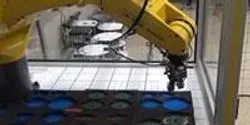Automation

Problem: Microplate readers are a common lab commodity; they’re used across research and drug discovery to detect the occurrence of biological events. However, the potential for experimental errors is a frustrating reality. An incorrect dispensing position, for example, will provide unreliable results—requiring researchers to re-run the assay or, if undetected, lead to faulty data. The same is true if the dispenser isn’t properly primed.

Neural prosthetic devices implanted in the brain's movement center, the motor cortex, can allow patients with amputations or paralysis to control the movement of a robotic limb—one that can be either connected to or separate from the patient's own limb. However, current neuroprosthetics produce motion that is delayed and jerky—not the smooth and seemingly automatic gestures associated with natural movement. Now, by implanting neuroprosthetics in a part of the brain that controls not the movement directly but rather our intent to move, Caltech researchers have developed a way to produce more natural and fluid motions.

What do you know? There is now a world standard for capturing and conveying the knowledge that robots possess—or, to get philosophical about it, an ontology for automatons.

Dr. Nathaniel Hentz is assistant director of the analytical lab at the Golden LEAF Biomanufacturing Training and Education Center (BTEC), where he develops bioanalytical assays in support of the various biomanufacturing processes taught at BTEC. Since 2008, Dr. Hentz has been responsible for developing and teaching undergraduate and graduate courses, industry short courses, and government (FDA and BARDA) training courses, with a focus on assay development and validation, quality control, and liquid-handling performance.

Microplate readers are commonly used in biological research for assay development (39.4%), measurement of biomolecule concentration (34.5%), cell biology (25%), biomarker research (24.0%), and DNA quantification (20% of survey respondents). In addition, microplate readers find use in disease study, IVF, proteomics, PCR setup, and stem cell research. With multiple read modes available and numerous accessories, choosing a microplate reader that meets your current and future needs can prove a daunting task.















